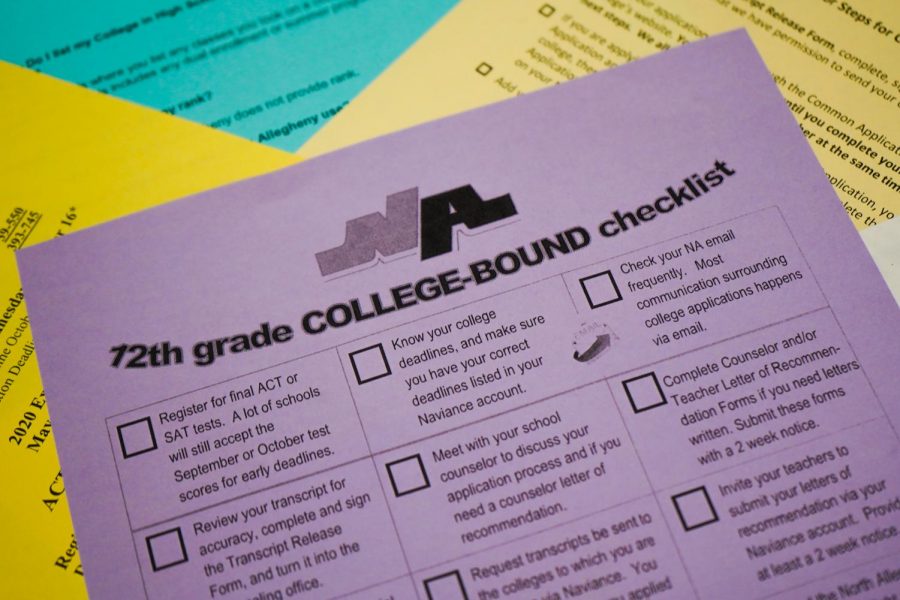When is Early too Early?
A look into the differences between early action and early decision and their merits.
October 30, 2019
With many seniors beginning to narrow down their lists of prospective colleges, the question of when to apply comes to the forefront. Nearly every college offers various stages of admission which can have students receiving acceptance letters anywhere from November to March.
In addition to regular decision, many schools offer either early decision or early action. By applying early, students are often able to increase their chances of getting into their top school. Forbes Magazine reported that some colleges are now accepting half of their classes from the early decision pool. However, if applying through early decision and accepted, the student will then have to rescind all other applications and will be locked into going to that school. Why do schools do this, and is it a smart decision for students?
When applying early decision (ED), a binding action, a student can only apply this way to one school. For many colleges, the deadline for ED occurs in early November and students will find out whether they have been accepted by New Year’s Day. While a student can still apply to other schools through regular decision, if accepted to their early decision school the student must withdraw all other applications. However, according to the College Board, if the student and their family declare the financial aid offered by the school is inadequate, they can still reject the admission.
Early action (EA) is similar to early decision in that the application deadline usually occurs in early November and students receive letters earlier than regular decision. However, early action is often a nonbinding agreement. This means that applicants can freely reject their admission into the college. Still, those applying to colleges can only apply for EA at one college.
According to the College Board, students who apply early should be sure they want to attend that school and have a resume well above the average for that university. It then goes on to state that the benefits for doing so range from having reduced waiting periods to having more time to find housing. Some of the other benefits of applying early are saving time and money by not applying to other schools. However, the College Board acknowledges that applying early may not give applicants enough time to explore all of their options as well as reduce financial aid given by the college.
As mentioned above, students can also increase their chances of being accepted into a college through early applications. In a recent admissions presentation by American University, the admissions officers responded to a question regarding acceptance rates’ relationship with their early decision program by saying that those who apply ED have over twice the chance of getting in compared to those who apply regular decision.
Along the lines of financial aid, Forbes interviewed an admissions officer from Georgia Tech. In the interview, the admissions officer notes that while colleges would like to offer the full financial aid package to early deciders, many colleges, due to a drop off in demand, are struggling to find revenue streams, and those applying through early decision are a good source of income. The admissions officer goes on to state that some colleges have the opposite issue — they are struggling to find staff members to teach the surge in students. By accepting more people through early decision, colleges can feel more confident that they are selecting students who are genuinely interested in attending their institution. Yet, due to tight budgets, many colleges do not have the funds to offer every student who applies early an appealing financial package.
While early decision and early action may cause some students to stress by making them rush to make a final decision, early admission allows seniors to receive acceptance letters from colleges earlier than usual. These students can then enjoy the rest of the senior year without the looming threat of college admissions.














Jillian Senrud • Oct 30, 2019 at 11:11 am
Super informative. I have been super confused about the differences and this helped so much!